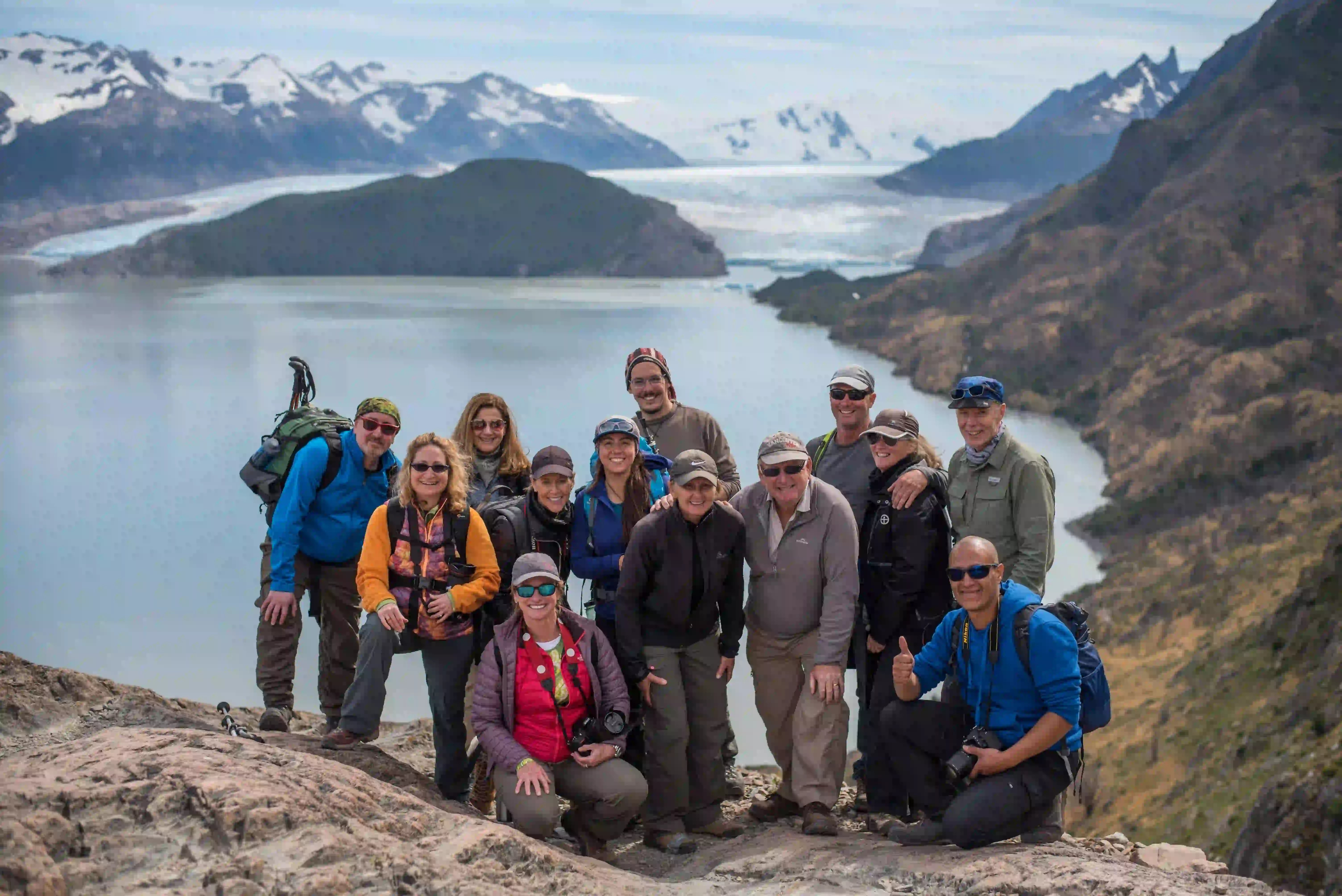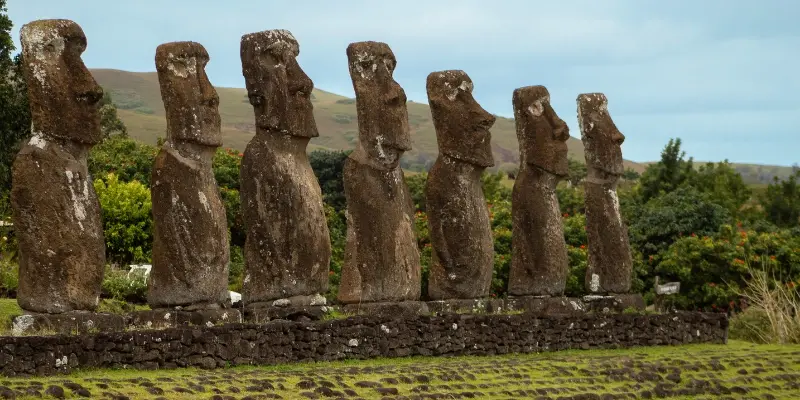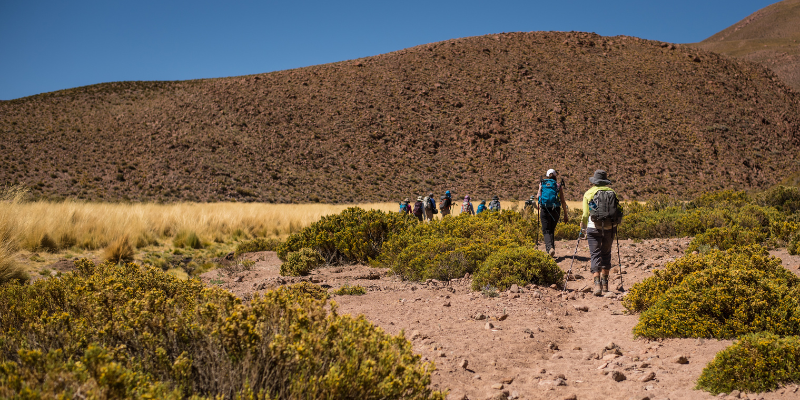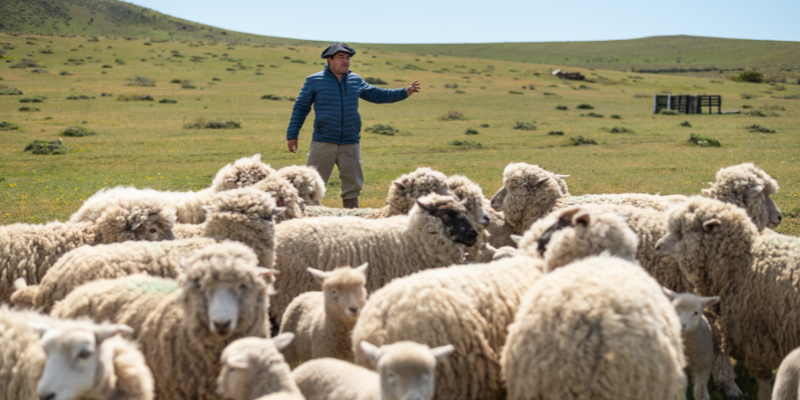Looking for the most complete guide on the Torres del Paine Circuit (“O Trek”) in Patagonia, the most epic multi-day hike in Torres del Paine National Park? Here you go!
SUMMARY
1. Where is the Paine Circuit located?
2. When is the best time to hike the Paine Circuit?
3. Where to stay on the Paine Circuit?
4. How difficult is the Paine Circuit?
5. What should I pack for the Paine Circuit?
6. How long does it take to hike the Paine Circuit?
7. What are the highlights of the Paine Circuit?
8. Should I do the Paine Circuit with a guide?
9. O Trek VS W Trek : who will win?
10. How to book the Paine Circuit?
There is no doubt that the “O Trek” in Torres del Paine is one of the best treks in Patagonia (and in the world!). This 360° journey around the Torres del Paine mountain range is not really a “O-shaped” hiking trail as it also includes the more popular W Trek, with highlights like the towers’ base viewpoint, the French valley and Grey glacier. But it does resemble a big “O” on the map of the park!
The Paine Circuit is for experienced hikers only, as it requires hiking for a week through some irregular terrain with unpredictable weather conditions. This is the reason why trails here are less crowded that most places in the park, and you’ll barely find crowds in the northern part of the mountains (Dickson and Perros).
The “O Trek” is the definition of “wilderness” and features some of Patagonia’s most spectacular places, namely the John Gardner Pass and the Perros glacier. However, getting to these spots requires some preparation, and you’d better getting off the sofa now if you’re used to spending your days watching television (no joke!). Here, you’ll walk up to 12 hours a day, with some uphills and downhills you’ll never forget.
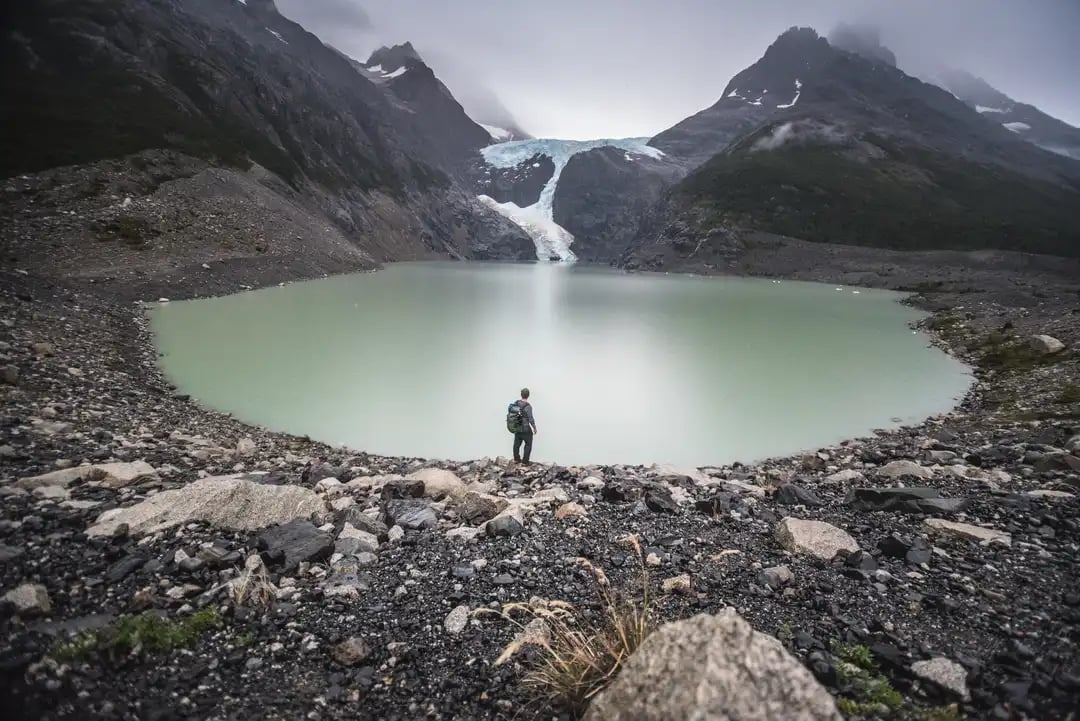
If you’re in good shape, this may become your all-time favorite hiking experience. We designed the most complete article to answer your questions and make your Torres del Paine Circuit even more epic!
Ready for a hike of a lifetime?
1. Where is the Paine Circuit located?
The trails of the O Trek are located in Torres del Paine National Park, the most spectacular park in Chile’s Patagonia. Torres del Paine is an area of 1,814km2 (700 sq. mi.) located near Puerto Natales (roughly 2 hours away) in the Magallanes Region, famous for its granite spires, blue glaciers, windy plains and abundant wildlife.
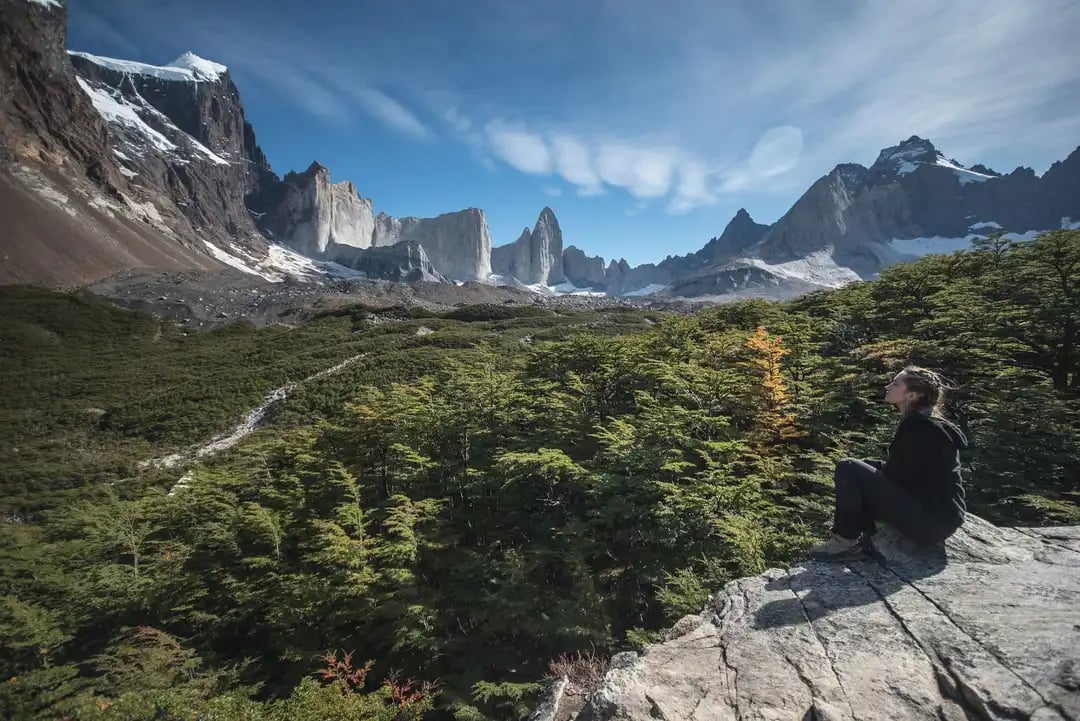
OK, and how do I get there?
Getting to Torres del Paine National Park is a memorable experience. If you are in Chile, you must fly to Punta Arenas (a 3-hour flight) and drive about 5 hours to the park. From November to March (when this option is usually available, though other dates may be open), you can also fly to Puerto Natales, so you spend less time on the road.
And if you are exploring the area of El Calafate (or El Chaltén) in the nearby Argentina, you can cross the border while driving through the Cerro Castillo or Paso Dorotea (near Puerto Natales), an overall 4 to 5-hour trip.
2. When is the best time to do the Paine Circuit?
It is extremely hard to find a correct answer to the question “when is the best time to visit Torres del Paine?”. Patagonia’s weather can change in the blink of an eye and each month has its advantage and drawbacks. But a good start would be to understand the meaning of “season” here.
High season goes from November to March. This is the busiest time of the year in the region, with the highest prices and the greatest amount of hikers on the trails. Some places can be crowded (like the towers’ base viewpoint), but the amount of hikers on the trails of the Paine Circuit is limited so you won’t feel campsites are overcrowded. Days are longer, with up to 17 hours of daylight in late December.
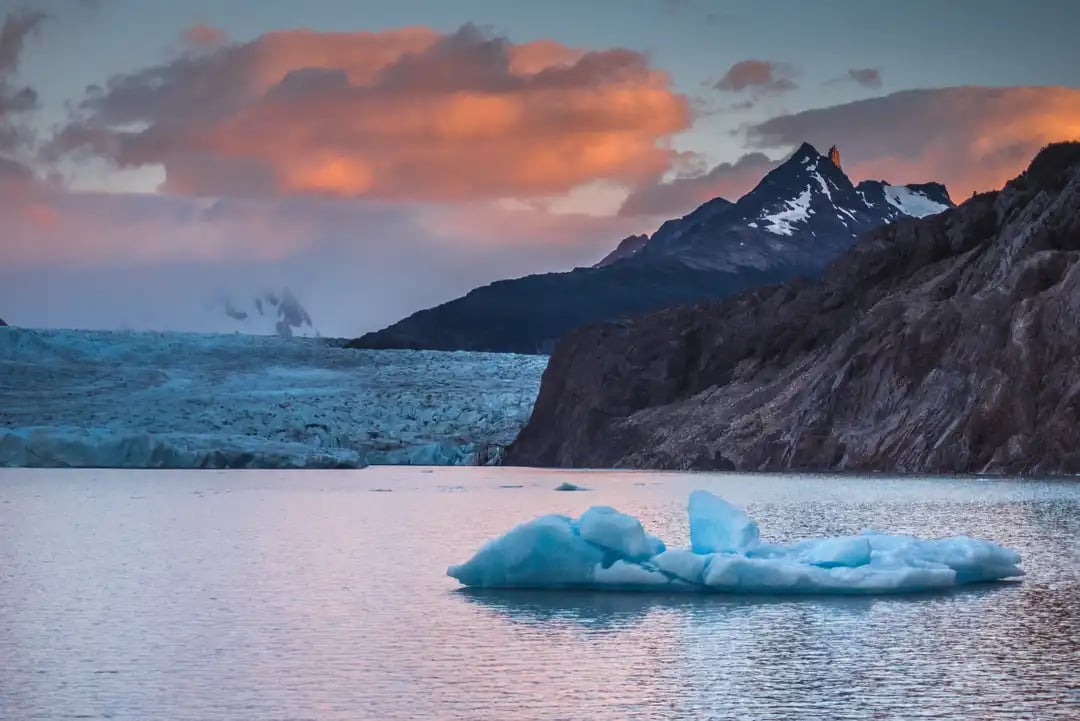
Low Season includes the months of September, October, April and May. There are less people in the park, which is great for wildlife spotting and to have the viewpoints for yourself. Off-season goes from May to August. Most hotels are closed – including EcoCamp – and days are short, especially in the heart of Winter (June/July) with no more than 8 hours of daylight a day.
But while Torres del Paine is open all year round, the trails of the “O Trek” are open only from October to March (we offer it from November). Hiking the Paine Circuit can therefore be done Spring and Summer only, with the quietest months being October and March.
As for the weather, there isn’t one truth but a few trends. Summer (late December to early March) is warmer but also has the strongest winds. Autumn (late March to early June) and Winter (late June to early September) are great for wildlife spotting, with less wind and more tranquility on the trails. Finally, Spring (late September to early December) is a great time for flowers and wildlife, with fresh nights but usually some nice weather for hiking. And if you want to most complete information, watch our video!
3. Where to stay on the Paine Circuit?
Not an avid camper? You’ll have no choice but to camp of the Paine Circuit! However, you can mix it with some cozy nights in the park, and we can only recommend EcoCamp Patagonia, the world’s first geodesic hotel located in the very heart of Torres del Paine.
EcoCamp is a great “base camp” as it is located at the beginning (and the end) of the circuit, so you can spend your first and last nights in a beautiful dome while socializing with fellow travelers. It is also a good way to lower your footprint, as the hotel is fully sustainable! If you travel with us, nights 1, 7 and 8 are spent in a campsite near EcoCamp, though you will enjoy EcoCamp's facilities (gourmet meals, bar and why not Yoga and massages - a cool treat after spending a week hiking) during that time. The logistics are also done from there. You can even upgrade to a dome at EcoCamp (see picture below), depending on availability.
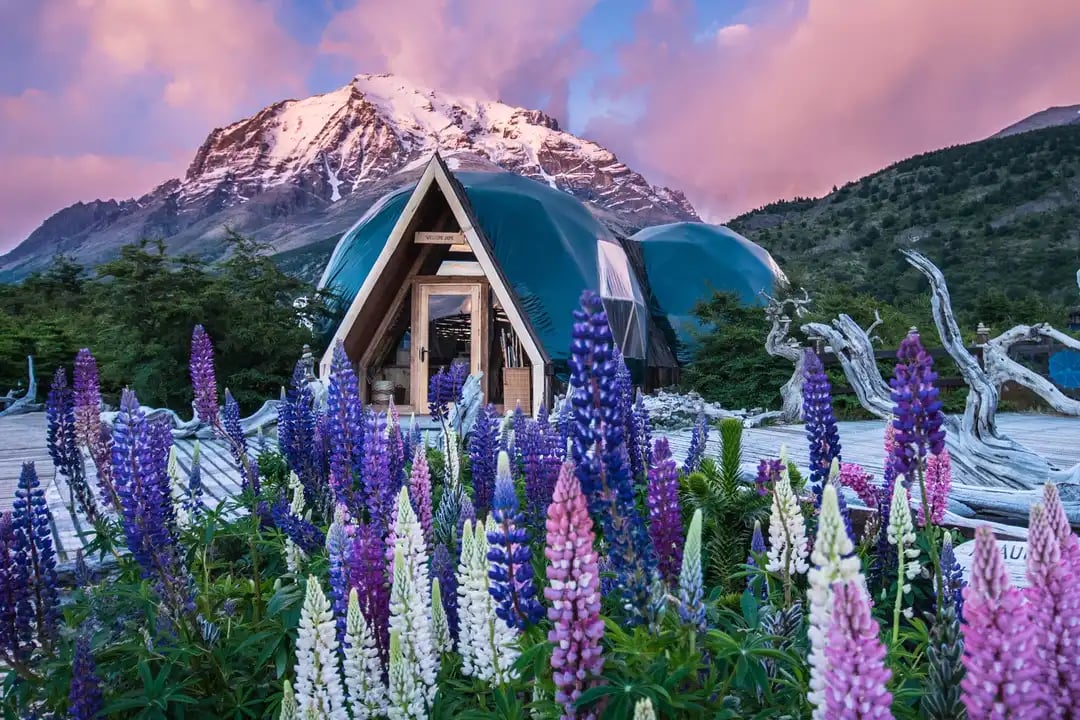
The Paine circuit includes 8 nights in the park. 2 of them can be spent a EcoCamp, but at least 6 of them must be spent in campsites and/or refuges.
You won’t find any refuge on the northern part of Torres del Paine, which you explore on the first three days. Instead, you must stay in the local campsites, namely Dickson and Perros. Both are beautiful locations, with nice (and warm) communal areas and the possibility to buy food (some good one!) in case you don’t bring yours. Perros is the most basic campsite, and access to warm water is not guaranteed, though there are showers available.
The other campsites and refuges (locally called “refugios”) on the way – located on the trails of the W Trek – are more crowded. Refuges here are basically mountain huts, but they look like guest houses with plenty of comfort, including a nice bar and beautiful communal areas with a wood stove. Accommodation is in shared dorms, but there is the option to upgrade to a private alternative.
Check out our post that features everything you need to know about refugios for more information.
4. How difficult is the Paine Circuit?
The “O Trek” is not a technical trek, but it is a demanding multi-day hike that is recommended for experienced hikers only. Patagonia is low altitude, but there are some uphills and downhills you may find exhausting if you don’t train enough for the trek.
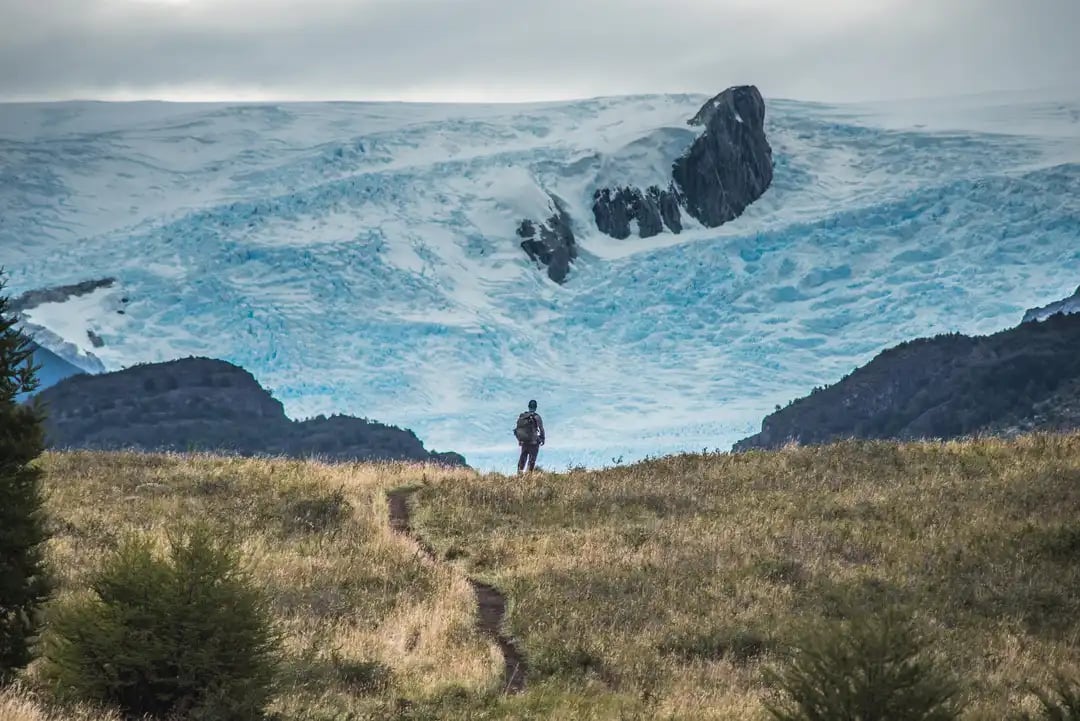
The highest point is the John Gardner Pass at 1200 m.a.s.l. (3940ft) on Day 4, followed by the towers’ base viewpoint (850m.a.s.l./2788ft) on Day 7.
On the first day of the trek, you will hike about 11 hours to Dickson Campsite (about 29 kilometers/18mi). While most of the trail is “flat”, this introduction to the O Trek is demanding. The most challenging hike is the John Gardner Pass (third day of the trek), a 22-kilometer (14mi) journey from the Perros campsite to Grey campsite – a 12-hour hike. It features a rewarding view of the Southern Patagonian Ice Fields, but also some potentially extreme weather conditions (this may be the windiest area in the park). Healthy knees are required for the downhill.
The other challenging hikes are the French Valley (25km/15mi) and the Towers’ Base (22km/14mi).
The weather is a key aspect of your experience (welcome to Patagonia!), but there is no reason for you not to have a blast on the trails if you come in good shape and with the right gear.
Read this great article by Outside Magazine featuring "How to Get in Shape For Hiking" so you can train adequately for the trek!
5. What should I pack for the Paine Circuit?
Note: if you hike the O Trek with Cascada Expediciones you will be supplied with most of the food and equipment that independent hikers must bring for themselves. If you’re an independent hiker, check out this post.
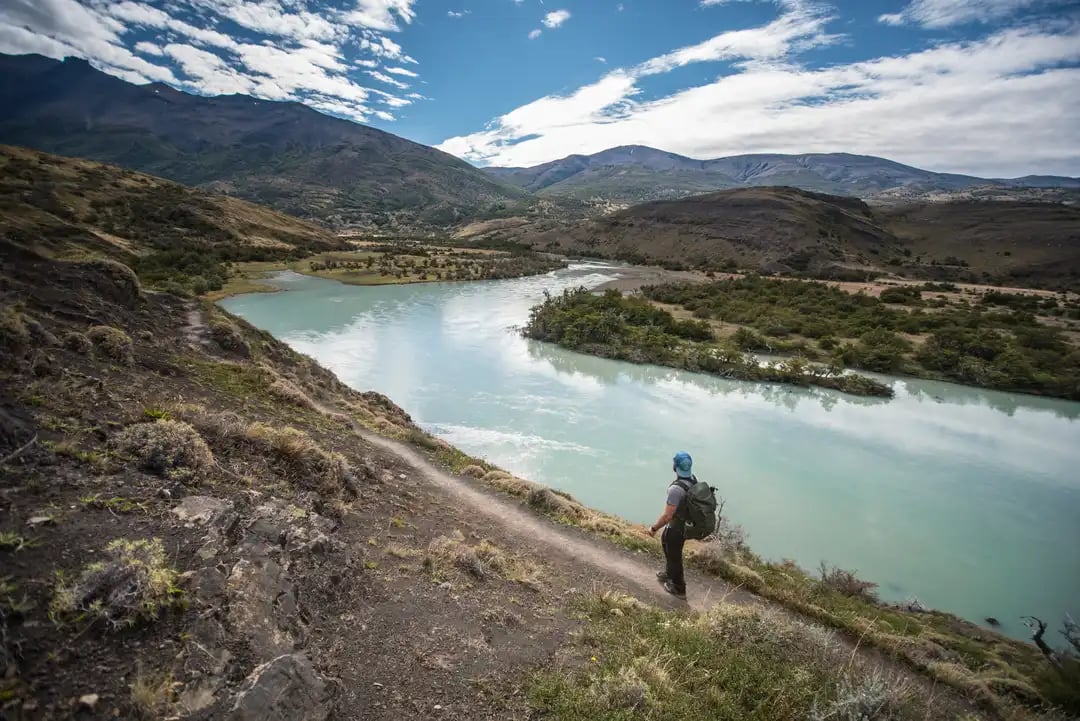
The rule of the 3 layers is sacred! The weather is kind of random so you should be able to remove or add a layer as quickly as the weather changes.
Base Layer: to keep you covered and ensure that perspiration is drawn away from the body.
Mid Layer (or insulating layer): to retain the body heat you generate. A fleece jacket or medium weight sweater is recommended.
Outer Layer: to protect you from the elements, mostly the wind and the rain. A lightweight waterproof layer is a clever idea!
Always consider packing as light as possible – over-packing will be bad for both your back and your knees! We suggest to bring hiking poles to protect your knees, and also sun protection (of at least 30SPF) as the sun is very powerful in this latitude.
A good backpack (between 50 to 80 liters) will make a huge difference, and ideally look for a waterproof one. We suggest to bring at least one dry bag so you can face the famous Patagonian cocktail “Rain & Wind”.
If you want to pack like a professional hiker, check out our video below and read our post “What Gear Should You Bring to Patagonia”
6. How long does it take to hike the Paine Circuit?
The full Paine circuit includes 7 days hiking with a total distance of 140 kilometers (87mi).
Our 9-Day Torres del Paine Circuit includes 2 days of traveling to/from the national park and 7 days on the trails.
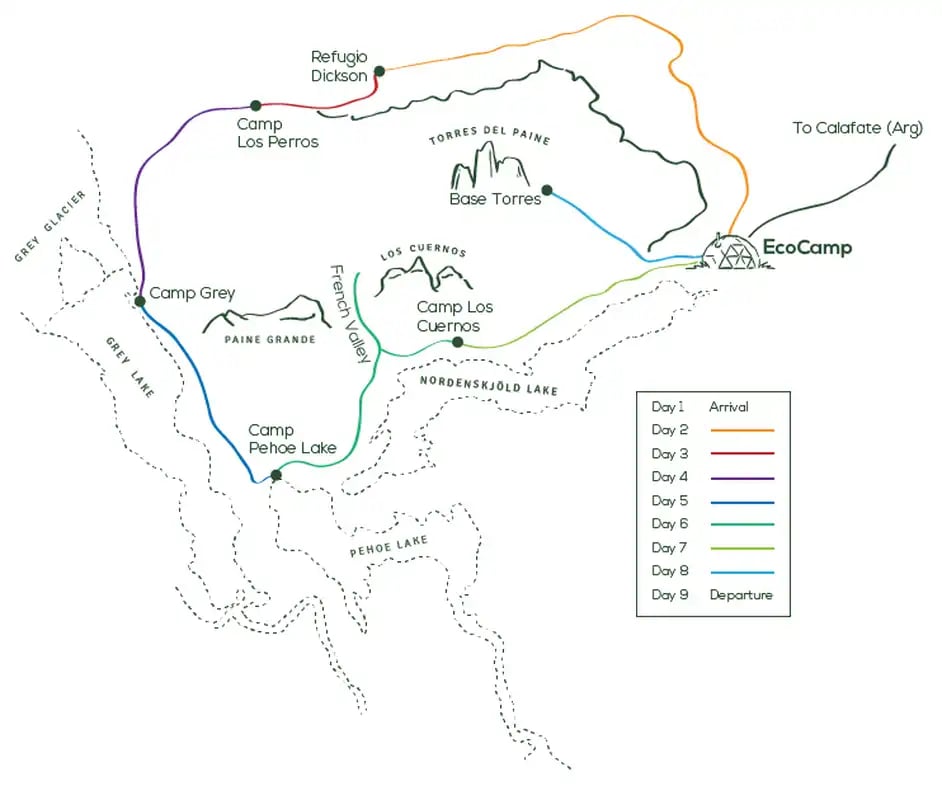
The itinerary is as follows:
- Day 1: Transfer to Torres del Paine. You will be picked up from the airport of from your hotel in Punta Arenas or Puerto Natales. From Punta Arenas, it’s a 6-hour drive to the park
- Day 2: Dickson glacier - EcoCamp area to Dickson campsite (29km/18 mi | 11 hours).
- Day 3: Perros Glacier - Dickson campsite to Perros campsite (9km/5mi | 5 hours).
- Day 4: John Gardner Pass - Perros campsite to Grey campsite (22km/14mi | 12 hours).
- Day 5: Grey trail - Grey campsite to Paine Grande refuge (11km/7mi | 5 hours)
- Day 6: French Valley – Paine Grande refuge to Domos Frances or Los Cuernos refuge (25km/15mi)
- Day 7: Nordenskjöld Lake – Domos Frances/Los Cuernos refuge to the EcoCamp area (16km/10mi)
- Day 8: The Towers’ Base Viewpoint (22km/14mi)
- Day 9: Drop off (Bye, bye Torres del Paine!)
Depending on weather conditions, you can choose to hike up to the British viewpoint while hiking through the French Valley on Day 6, which adds a few kilometers to the trek (which we included in the total distance).
Our “O Trek” have regular departures that are available every Wednesday from November to March.
7. What are the highlights of the Paine Circuit?
The Paine circuit offers the most breathtaking views in Chilean Patagonia. You will hike to the most spectacular places in Torres del Paine National Park and walk through pristine landscapes.
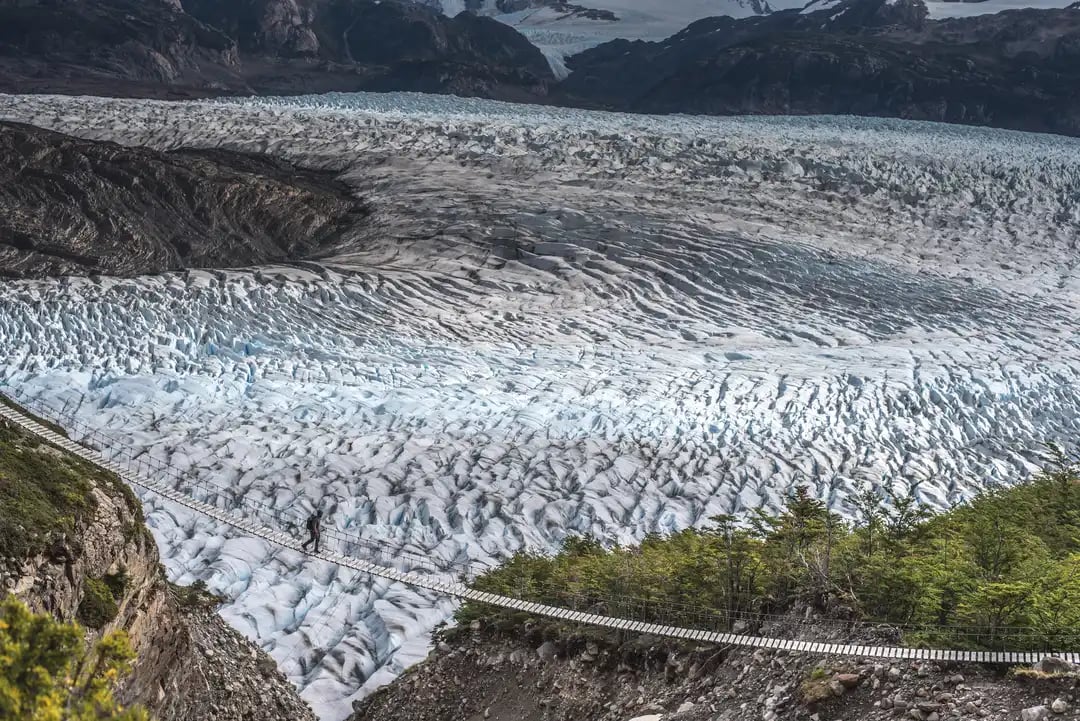
Lots of hikers consider the John Gardner Pass to be the highlight of the O Trek. That day, you will reach the highest point of the Paine circuit (1200m.a.s.l.) while hiking up a valley with lush green forests and boulders. Up there, you will get the best view of Grey glacier, a 360° viewpoint that will give you an idea of the vastness of the Southern Patagonian Ice Field. But the John Gardner Pass is not only a highlight for its views. It is a journey in itself, with some epic hanging bridges, unpredictable weather conditions and silent spots far from the crowds.
The Paine circuit includes the highlights of the W Trek. You will hike to French Valley and see Paine Grande, the highest peak in the park (3050m.a.s.l./10.000ft.). You will also hike to the towers’ base viewpoint, which may be the most photogenic spot in Patagonia with its incredible view of the famous granite spires.
A stay at EcoCamp Patagonia is also a highlight. It’s a cool idea to enjoy a well-deserved stay in a beautiful dome, with a nice treat thanks to its incredible food and perfect mood to socialize outside the trails!
Watch this award-winning short movie that features the best places of the Paine Circuit!
8. Should I do the Paine Circuit with a guide?
We highly recommend to hike the O Trek with a guide.
Due to the hazardous weather conditions and the eventual snow fall that may complicate the situation when it comes to staying on the trail (especially on the John Gardner pass), a guide will ensure you safety. Also, Torres del Paine National Park is a fascinating area, especially when it comes to geology, wildlife and history. A guide will make you learn a lot, which you won’t regret.
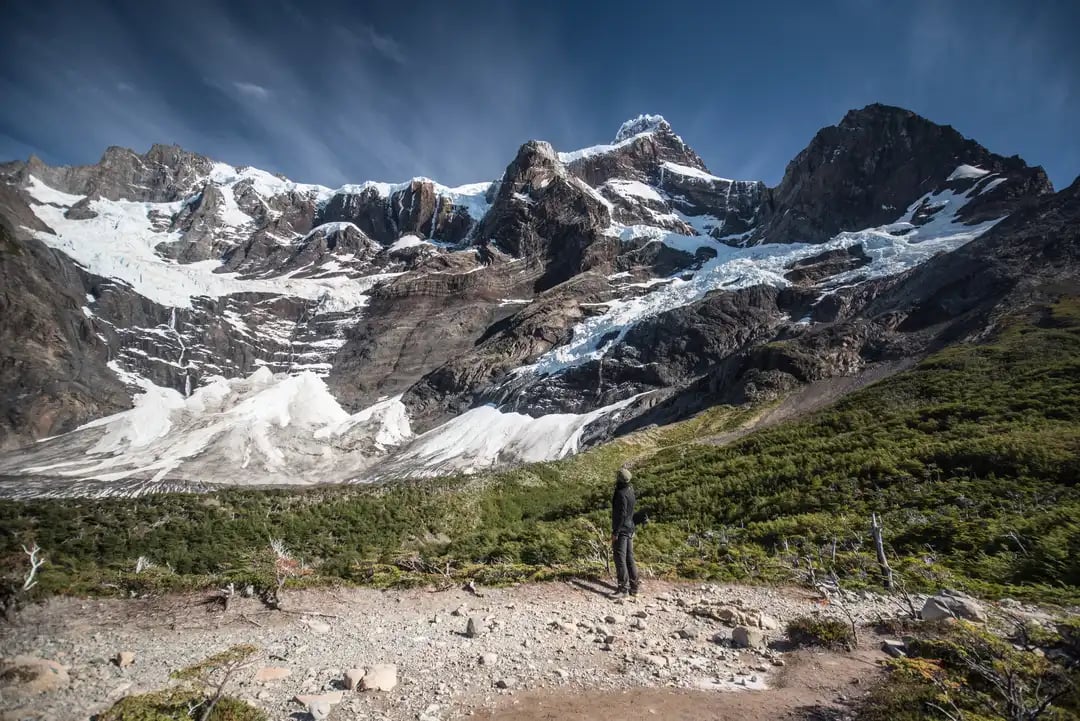
A guided O Trek is way more comfortable than a solo trip. If you travel with Cascada, the guide will help you with the logistics, which are not always easy to understand on the O Trek. You will also carry less weight, as porters will help you with some of your belongings (forget about setting up your tent when you finally reach the campsite!).
Whenever you travel on your own or with a guide, remember that the amount of hikers on the trails of the O Trek is limited. Refuges and campsites must be booked in advance. So you’d better book your trip with some anticipation, especially if you come in Peak Season (December to February)!
9. O Trek (Paine Circuit) VS W Trek: who will win?
The main difference between both treks is the duration. The O Trek is a 9-day experience (including traveling days), while the W Trek is usually completed in 7 days (but it can be as short as 5 days). If you’re in a rush, the W Trek could be a good alternative (check out this full guide)!
But nothing will replace the feeling of adventure you’ll get on the Paine Circuit. If you want to stay away from the crowds and go “into the wild”, the O Trek will always remain the best option. It is also much more demanding than the W Trek (almost twice the distance).
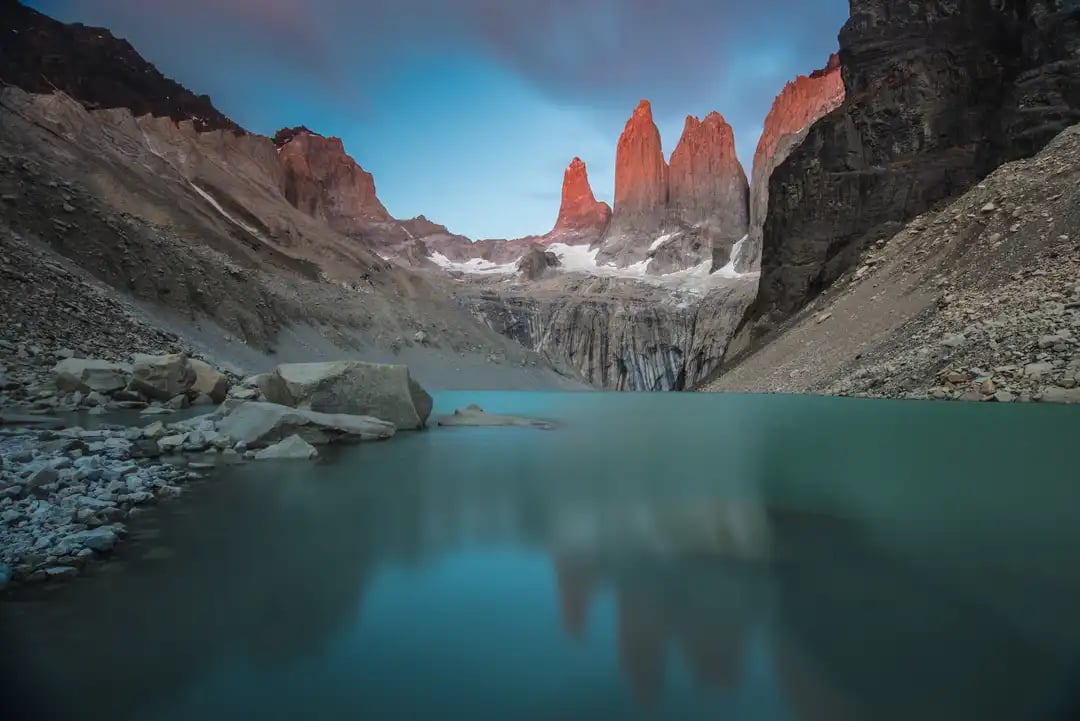
Total distance is 140km/86mi for the Paine Circuit VS 76km/47mi for the 7-Day W Trek.
On average the W Trek is more comfortable than the O Trek, as it offers the option to stay in a warm room every night. However, with some incredible campsites in wild locations, the O Trek wins when it comes to the factor “epic”.
Conclusion: choose the Paine Circuit if you are in good shape with no rush to complete the multiday hike. The W Trek is a good alternative if you are unsure about your physical shape and have less time to explore Patagonia (If you’re still undecided, check out this complete comparison).
10. How to book the Paine Circuit?
You can book your Paine Circuit in just a few clicks through the Cascada website, or contact us to organize the “O Trek” of your dreams!
